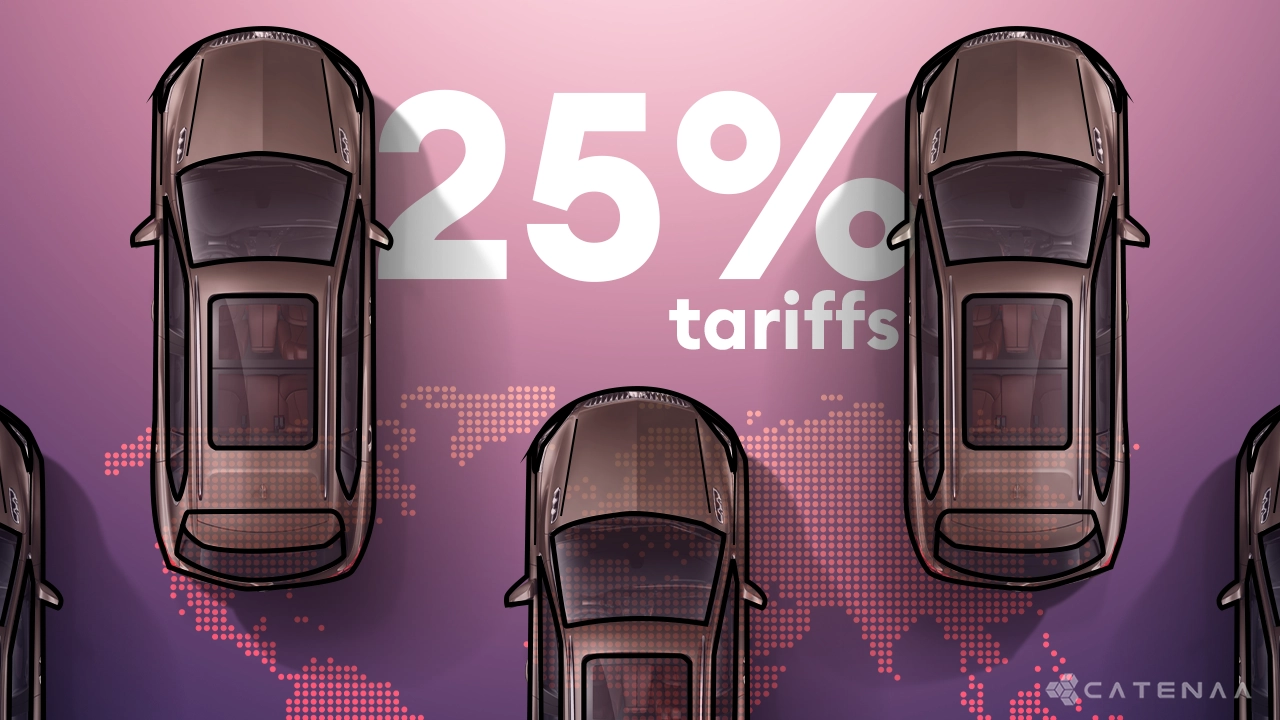Catenaa, Thursday, March 27, 2025- US President Donald Trump imposed 25% duties on all cars and light trucks not made in the US and certain auto parts widening the trade war he initiated when he took office in January.
“This will continue to spur growth that you’ve never seen before,” Trump said from the White House on Wednesday, signing an executive order putting the tariffs in place. The 25% tariffs are set to take effect April 2 and add to existing tariffs. The White House claimed that $100 billion in annual duties will be collected.
General Motors shares tumbled about 7.5% in early trading on Thursday following the news, while Stellantis shed 1.88% and Ford dipped 2.91%. European automakers as well as Japanese and Korean brands fell on Thursday as well.
Though the new tariffs will hit mostly foreign automakers, domestic automakers, including the Big Three — Ford, GM, and Stellantis — are concerned about their impact too. GM, Ford, and Stellantis build vehicles in Canada, Mexico, and China, and they foresee higher production costs due to tariffs’ effect on the auto supply chain.
Wednesday’s tariffs seem to initially target only finished auto products, however, the executive order and published fact sheet added parts like “engines, transmissions, powertrain parts, and electrical components” to the list of foreign goods subject to tariffs.
Trump has deemed April 2, the day on which he is slated to announce further tariffs, “Liberation Day” for the US, saying other countries have “ripped [us] off” and that any new tariffs are “reciprocal.”
While the costs of the new auto tariffs on foreign imports are hard to quantify, analysis from various data firms suggest price hikes of $3,000 to as much as $12,000 for non-premium autos.
The US imported $474 billion worth of automotive products in 2024, including passenger cars worth $220 billion. Mexico, Japan, South Korea, Canada and Germany, all close U.S. allies, were the biggest suppliers.


